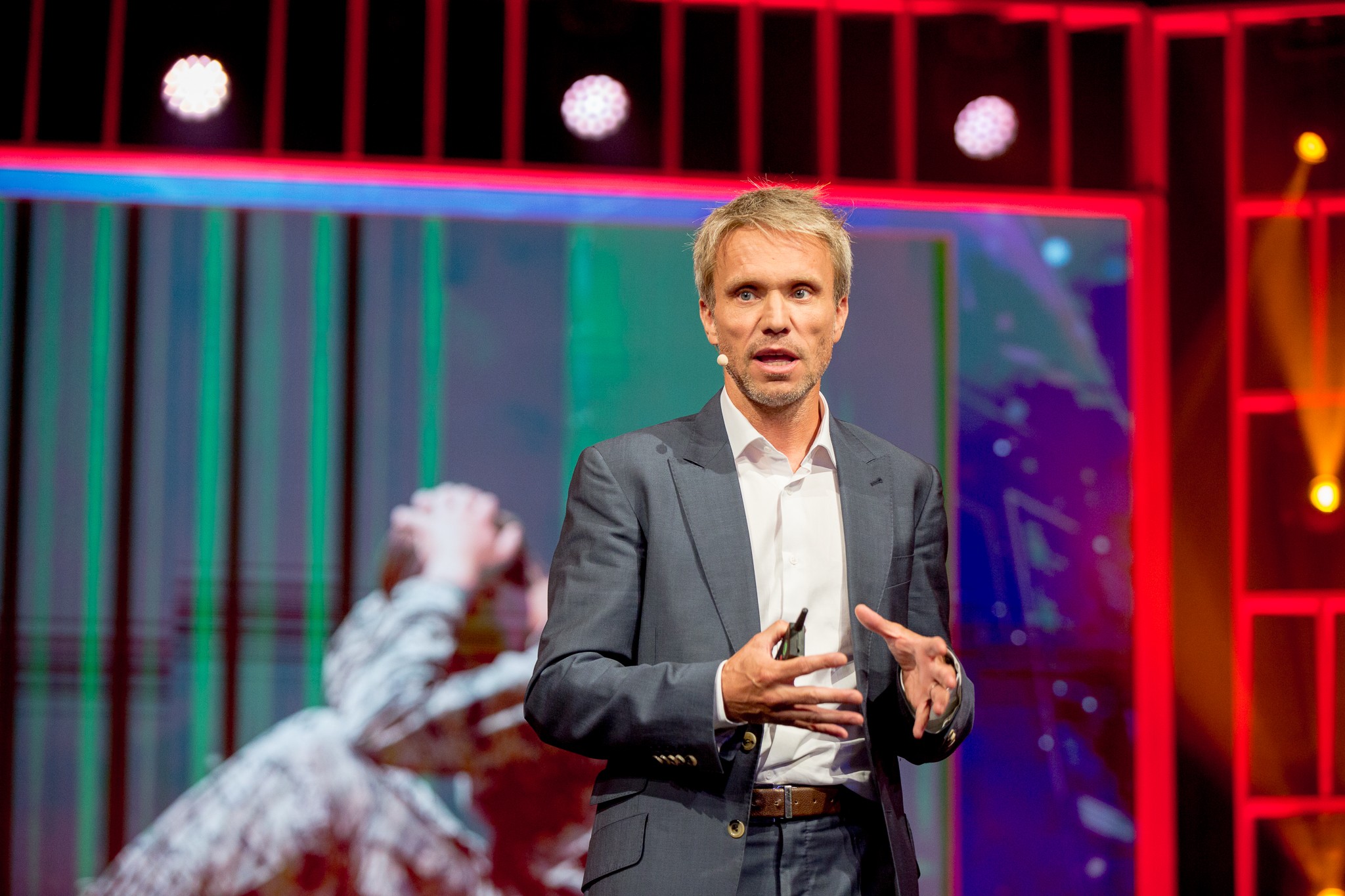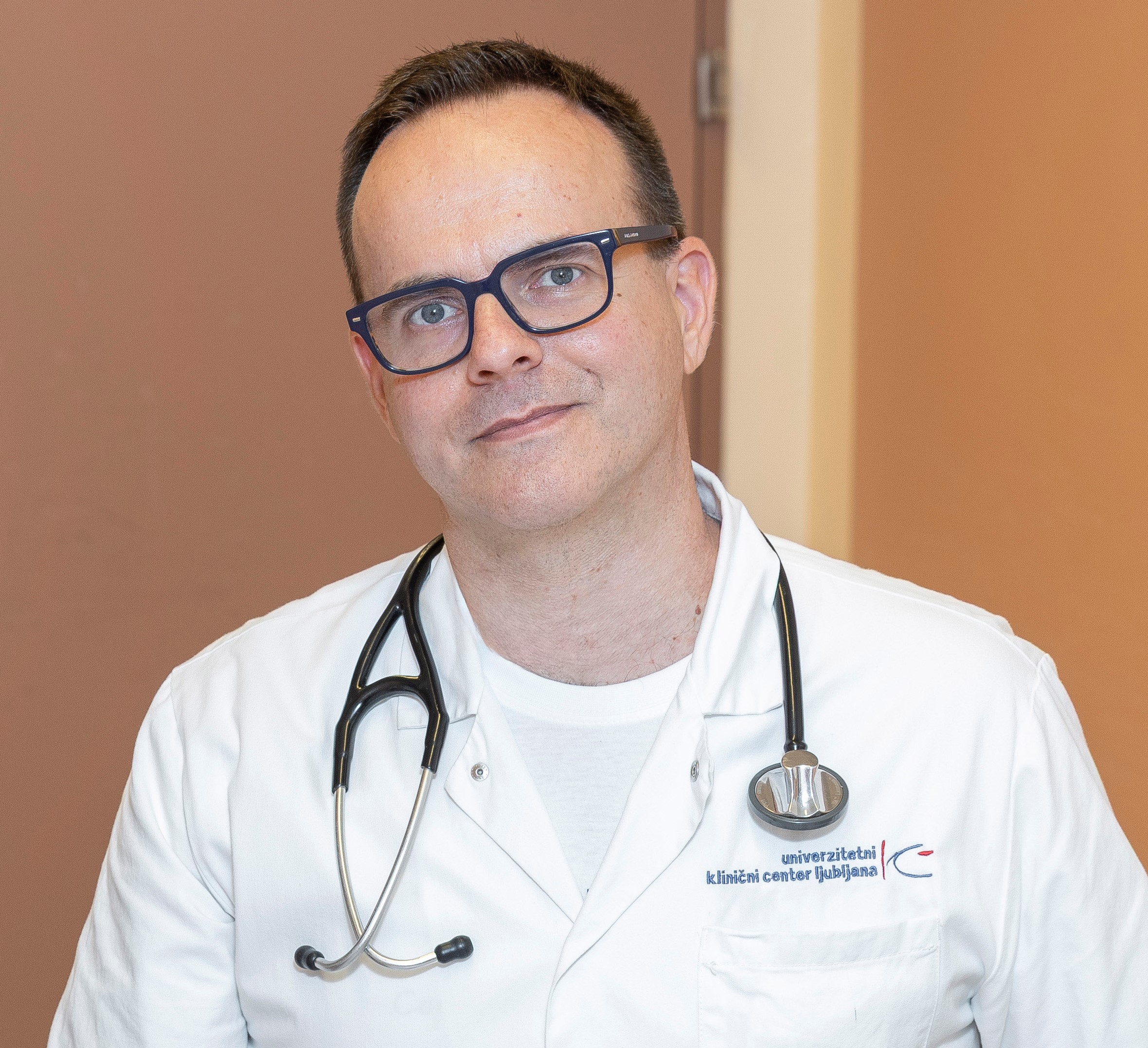Keynotes speakers
1. Prof. Dr. Johan Albrecht
Leveraging Pareto's 80/20 Rule to Reframe Public Health Priorities
More infos coming soon.

Prof. Dr. Johan Albrecht
University Ghent - Faculty of Economics & Business Administration - Belgium
2. Prof. Giovanni Briganti
AI in Health Care: Promises and Challenges
Artificial Intelligence (AI) is transforming healthcare. It is being applied to diagnose diseases, personalize treatment plans, optimize hospital operations, and even discover new drugs. From image analysis in radiology to predictive models for patient outcomes, AI is reshaping the way healthcare is delivered. However, the adoption of AI in healthcare is not without challenges. Issues such as data privacy, algorithmic bias, regulatory hurdles, and the need for robust validation pose significant barriers. Additionally, the integration of AI into clinical practice requires addressing ethical, deontological and societal concerns, ensuring transparency, and fostering trust among healthcare professionals and patients. The societal impact of AI in healthcare is profound. It has the potential to democratize access to quality care, reduce healthcare disparities, and improve global health outcomes. Yet, it also raises questions about workforce displacement, the digital divide, and the impact its use has on the patients. In this era of AI-driven healthcare, medical and clinical professionals, as well as biomedical researchers, play a pivotal role. They are not only end-users but also key contributors to the development, validation, and ethical deployment of AI technologies. This talk will explore the promise of AI in healthcare, the challenges it faces, its societal implications, and the critical role of healthcare professionals in shaping the future of AI-supported medicine.
CV
Giovanni Briganti is a psychiatrist and data scientist. At University of Mons, he is the Head of Unit of Computational Medicine and Neuropsychiatry and holds the Chair of AI and Digital Medicine, offering the world’s first compulsory AI courses in the medical curriculum and coordinating many projects in AI in health. He is the lead of AI4Health at AI4Belgium. At the University of Liège, he is professor of digital health.

Prof. Giovanni Briganti
M.D., Ph.D., Associate Professor and Chair of AI and Digital Medicine, Université de Mons - Belgium
3. Prof. Dr. Ute Bültmann
Young Adults, Mental Health & Work: Integrating a Life Course Perspective
Young adulthood is a challenging life phase including major life transitions like leaving the parental home, finishing education, starting a first job, starting romantic relationships, and parenthood. These transitions are interrelated and are likely to be influenced by earlier life experiences, such as childhood adversities and poor mental health. At the same time, young adults have to earn a living in a new world of work characterized by temporary employment, self-employment, and a 24/7 work cycle in a global economy. To promote sustainable employment throughout the working lives of young adults, a life course perspective must be integrated into work and mental health research, policy, and practice. A life course perspective highlights the importance of prior life experiences, such as where individuals grew up, who they grew up with, and their education and health status prior to working. This presentation explains and emphasizes the importance of applying a life course perspective to the working lives of young adults.
CV
Dr. Ute Bültmann is a professor of work and health, epidemiologist and the leader of public health research program in the Department of Health Sciences, Community and Occupational Medicine at the University of Groningen's Medical Center in the Netherlands. Bültmann's research interests include the epidemiology of work and mental health and the measurement of health-related functioning at work. Her current research activities focus on adding a life-course perspective to work and health research, and on translating findings into relevant policy and practice measures to make a difference in achieving healthy working lives. In 2022, Bültmann was awarded a 10-year Gravitation grant “Stress in Action” by the Dutch Ministry of Education, Culture and Science and the Dutch Research Council to advance the science of stress by moving the lab to daily life. In 2017, she received a Vici grant by the Dutch Research Council to assess mental health and work challenges with a life-course lens to support young workers transitioning into work and to facilitate a healthy working life. From 2003 until 2007, Bültmann worked at the National Institute of Occupational Health in Copenhagen, Denmark. She is also affiliated with the Karolinska Institutet in Stockholm, Sweden, and is involved in collaborative research projects on labour market experiences and health in Denmark, Sweden, Germany and Canada. Bültmann graduated in health sciences from Maastricht University in the Netherlands in 1997 and earned her PhD in epidemiology at the same university in 2002. Her PhD research looked at fatigue and psychological distress in the working population, in particular the role of work and lifestyle.

Prof. Dr. Ute Bültmann
Prof. dr., PhD, Epidemiologist, Professor of Work and Health and the Lifecourse, University of Groningen, University Medical Center Groningen, Department of Health Sciences, Community and Occupational Medicine - The Netherlands
4. Kristin Farrants
Sickness Absence among People of Higher Ages in the Workforce
Raising the retirement age and extending working lives in higher ages is a
political priority for many governments in the Europe and other parts of the
world, and the numbers and proportions of workers aged 55-64 and ≥65 in
the workforce have increased markedly over the past decades. This might
have implications for sickness absence and disability pension systems, since
higher age tends to come with more morbidity, and, potentially, more work
disability. At the same time, particularly after pension benefits are available,
there is a strong health-related selection out of work, and those who remain
in paid work after these ages tend to be healthier than those who are not.
These two age-related trends might have different implications for sickness
absence at older ages. While concerns have been expressed that the result of
the current extensions to working life and raises of the old-age pension age
will result in a shuffling of people from old-age pension systems into sickness
benefit systems rather than resulting in an actual increased work
participation, the current knowledge base about to what extent this is the
case, is equivocal and somewhat patchwork.
This talk will give an overview of the current state of knowledge about
sickness absence in the context of extending working lives at higher ages, and
the relationship between age and sickness absence. In what ways are older
workers similar to younger workers when it comes to sickness absence
prevalence, duration, and diagnoses, and in what ways are they different?
What is the association between sickness absence and subsequent work exit –
and how does this change after the standard pension age is reached? Both
results from state-of-the-art research and important knowledge gaps will be
covered in the talk.

Kristin Farrants
PhD, MSc, Assistant Professor in Insurance Medicine Division of Insurance Medicine Department of Clinical Neuroscience Karolinska Institutet Stockholm – Sweden
5. Prof. Lode Godderis
Return to Work as a Core Health Outcome: Drivers, Implementation Levers, and Expected Impact
Introduction
Sustainable return to work (RTW) following long-term sickness absence is increasingly
recognised as a determinant of both health and social inclusion. Yet current systems
are hindered by fragmented responsibilities, late interventions, and a narrow medical
framing that overlooks work participation as an explicit recovery goal. Embedding
RTW as a health and healthcare objective could align incentives and integrate
occupational reintegration into care pathways. Strengthening primary care networks
offers a promising operational pathway to realise this vision.
Objective
To synthesise conceptual drivers for positioning RTW as a health objective with
empirical insights from a Flemish project leveraging primary care zones to improve
reintegration outcomes.
Methods
A targeted literature review was conducted to identify evidence on systemic barriers
to RTW, effective cross-sector collaboration models, and policy frameworks that
embed work participation in healthcare objectives. This synthesis was combined with
findings from a participatory, multi-stakeholder intervention in two Flemish primary
care zones. Co-creation sessions with general practitioners, psychologists,
occupational physicians, medical advisors, employment and RTW counsellors, and
employer/worker representatives were used to identify barriers and co-develop
practical tools, including stakeholder profiles, local networking events, case-based
collaboration protocols, and a GP-focused RTW Guide.
Results
Literature review and fieldwork converged on three core systemic challenges: (1) lack
of coordination and clear ownership, (2) fragmented or opaque navigation routes
between health and work services, and (3) limited access to reintegration
instruments. Solutions emerging from the project address these gaps through locally
anchored coordination, accessible referral tools, and structured stakeholder
engagement. Policy levers identified include formal recognition of RTW as a
health/prevention objective, integration of RTW steps into discharge and follow-up
protocols, procedural simplification, and structural support for local cross-sector
collaboration.
Conclusion
Evidence from research and practice points to the need for five strategic mindset
shifts: (1) control → trust, with early employer–worker contact; (2) isolated actors →
coordinated “archipelago” of stakeholders; (3) absence of RTW in care pathways →
embedded reintegration goals from treatment onset; (4) misaligned incentives →
performance metrics rewarding RTW processes; and (5) low outreach → proactive
equity-focused engagement. Combining these shifts with operational mechanisms in
primary care zones offers a coherent, feasible strategy to address reintegration
challenges, fostering earlier action, clearer role ownership, and better alignment
across stakeholders, with potential to improve both health outcomes and sustainable
workforce participation.
Keywords: return to work, primary care, reintegration, occupational health, policy
innovation, multidisciplinary collaboration
CV
Lode Godderis is full professor Occupational Medicine at the Centre for Environment
and Health of the University of Leuven. He investigates the impact of work on health
in workers by unravelling the underlying mechanism and the reverse, how health can
affect work (dis)ability. He is CEO at group IDEWE, which engages in the provision
occupational health and safety services as the largest External Service for Prevention
and Protection at Work in Belgium and IBEVE, which provides advice in Environment
and Safety.
More information on his research, projects and publications:
https://www.kuleuven.be/wieiswie/en/person/00005874

Prof. Lode Godderis
Professor at the Centre for Environment and health of the University of Leuven - Belgium
6. Prof. Paul Hoff
More infos coming soon.
7. Prof. Borut Jug
Cardiac Rehabilitation: From Disease Management to Cost-effective Comprehensive Patient Care
Cardiac rehabilitation (CR) is a complex intervention aimed at improving cardiovascular health trough several core components, including supervised exercise training, risk factor control, secondary prevention, and psychosocial and vocational support. For patients with coronary artery disease and heart failure, participation in CR is a class I guideline-endorsed recommendation and a measure of quality of care. While the delivery of CR may vary, exercise-based CR should ideally be provided through multidisciplinary and comprehensive programmes, encompassing several core components and at least 36 supervised sessions over several months. Centre-based outpatient comprehensive CR programmes provide such structure and duration and can accommodate enough evidence-based core interventions to elicit improvements in cardiovascular health. Other modalities, such as short-term residential CR (wherein the patients reside in a dedicated CR facility for a short time, e.g., for 2-4 weeks), primarily focus on patients’ recovery after a major cardiovascular event; while limited in duration and based on comparatively fewer outcomes research studies, short-term CR programmes still provide clinical benefits and thus remain popular in continental Europe, especially in German-speaking countries. In Slovenia, prior to 2017, cardiac rehabilitation was under-utilised even in academic cardiovascular centres and the options for CR were limited to short-term residential programmes. To expand CR content and provision, key stakeholders (including the Healthcare Insurance Institute) proposed the set-up of comprehensive outpatient CR centres affiliated with each regional hospital in the country. Starting in 2017, seven regional centres were established to provide comprehensive multidisciplinary outpatient CR. The introduction of regional comprehensive outpatient CR programmes in Slovenia provided a unique opportunity to assess the impact on nation-wide CR uptake and to estimate the real-life comparative effectiveness of participation to either comprehensive outpatient or short-term residential CR in terms of improved process of care, outcomes and cost-effectiveness.
CV

Prof. Borut Jug
MD, PhD, Faculty of Medicine, University of Ljubljana, University Medical Centre Ljubljana University Medical Centre Ljubljana - Head of Department of Vascular Medicine – Slovenia
8. Dr. Polit. Solveig Ose
Future of Public Health and Care Services
Demographic shifts across many Western countries are characterised by rapid population ageing and
a stagnating or declining working-age population. Health and care professionals are already facing
high levels of stress and heavy workloads, with rising rates of sickness absence. Public
services—typically labour-intensive, must compete with private sector employers for personnel.
Unlike market-oriented sectors, productivity gains in labour-intensive services are limited, meaning
that increased staffing will be necessary to meet growing demand and maintain service quality.
Our research on nurses for instance, shows that they frequently carry out tasks that could be
delegated to cleaning staff, kitchen personnel, or administrative support. To relieve pressure on
nurses and improve efficiency, health and care services should invest in a broader range of service
personnel.
To foster positive productivity development, public services should be streamlined from the top
rather than the bottom. The most promising approach is to gradually reduce the number of
bureaucratic roles at central, regional, and local levels using technology. Digital solutions can enable
both central government and local politicians to monitor service delivery and access essential
management information efficiently.
Health and care personnel are at the heart of service innovation. Many public sector professionals
are motivated by a desire to address challenges rather than pursue prestige or financial gain. This
intrinsic motivation can foster innovation, particularly when bureaucratic constraints are minimised.
A significant proportion of innovation in public services occurs at the local level, often initiated by
frontline employees. These innovations are frequently informal or invisible, taking the form of ad hoc
solutions, practice-based changes, or creative problem-solving using available resources.
There is a persistent tension between industrial rationalisation (characterised by standardisation,
efficiency, hierarchy, and New Public Management) and professional rationalisation (emphasises
flexibility, discretion, and relational service). Employees often favour the latter, as it supports
innovation tailored to individual needs and circumstances.
The Nordic countries have a strong starting point for addressing these challenges. With well-
developed welfare systems, high levels of digitalisation, and a tradition of trust in public institutions,
they are well-positioned to implement smart, forward-looking reforms that safeguard service quality
while enhancing efficiency.
CV
Name: Solveig Osborg Ose
Data of birth: 1971
Home address: Norway
Present Positions: Senior scientist
Key qualifications:
Project management, Mental Health services research, Comparative analyses (companies, health services
units, municipalities, industries), NEET, Labour Economics, Advanced statistics, Econometric analyses,
Empirical modelling, Qualitative methods, Method triangulation
Education: Dr.polit from NTNU (Economics): Title of dissertation: Essays on Worker Absenteeism
Employment record:
2014 - Senior scientist at SINTEF Health Research
2011 - 2013 Associated professor II at the Department of Public Health and General Practice at NTNU
(20%)
2010 - 2014 Research manager of the research group Work and Health at SINTEF Technology and
Society, Dep. Health
2006 - 2009: Coordinating director of the research group Work and Health at SINTEF Health research
2006 - Senior scientist at SINTEF Health Research
2003 - 2006: Scientist at SINTEF Health Research, Department of Mental Health
2000 - Reviewer in Journal of Health Economics, Labour Economics and others
1998 - 2003: Research fellow and lecturer (mathematics, macroeconomics, econometrics) at NTNU,
Department of Economics
1999 - Counselling master's degree students
1998 - 2003: Internal examiner, NTNU, Department of Economics
1998 - 2003: External examiner, University of Bergen, Department of Economics
Journal publications, peer review (see also Sikt and Google Scholar)

Dr. Polit. Solveig Ose
Senior scientist at SINTEF Health Research – Norway
9. Prof. Olivier Sibony
Noise in Insurance Medicine: a flaw in Human Judgment
More infos coming soon.

Prof. Olivier Sibony
HEC – Paris - France
10. Dr. Klaus-Peter Thiele
“Advances in Survival and Quality of Life with Hematologic Neoplasms in the Era of Personalized Medicine - Implications for the Return-to-work Process”
More infos coming soon.

Dr. Klaus-Peter Thiele
Medizinischer Dienst Nordrhein - Kompetenz Centrum Onkologie MDK Nordrhein - Germany
11. Prof. Paulus Torkki
Value-based Healthcare in Public Health Systems – Tracking Outcomes and Costs at a Population Level”
VBHC in Public Health Systems – Tracking Outcomes and Costs at a Population Level Value-Based Healthcare (VBHC) has reshaped thinking about efficiency and outcomes in clinical care, yet its implementation in publicly financed, population-wide systems remains limited. Public and insurance-based health systems face a dual challenge: ensuring equity while managing increasing costs and complexity. This keynote explores how VBHC principles can be operationalized at a population level—where the “patient” is the entire insured or resident population rather than an individual.
The presentation introduces an outcome-based segmentation model that enables health authorities to link clinical outcomes, costs, and population segments in a comparable framework. The approach integrates registry data, patient-reported outcomes, and cost information to monitor value creation across diseases and care pathways.
Examples illustrate how population-level outcome and cost tracking can inform strategic purchasing, preventive interventions, and integrated care planning. By identifying high-impact population segments and variation in value, policymakers can target improvement efforts more effectively.
The keynote concludes by discussing implications for both tax-funded and insurance-based systems. It highlights how VBHC can evolve from a provider-level management concept into a governance model for sustainable, equitable, and learning-oriented public health systems.
CV

Prof. Paulus Torkki
Associate Professor, Healthcare Operations Management, University of Helsinki, Faculty of Medicine -Department of Public Health - Finland
12. Prof. Marianna Virtanen
Supporting Mental Health in the Workplace
Mental health conditions are a leading cause of disability in high-income
countries, and in Europe, it has been estimated that more than 125 million
people live with a mental health condition. Globally, nearly 1 billion people
are living with a mental disorder. Although working conditions have been
found to be associated with increased risk of mental health problems, good-
quality work can be good for mental health, and most people experiencing a
mental health problem want to work. With the right accommodations, many
workers can continue to work.
An established mental health policy in the workplace is key when supporting
mental health at work. A comprehensive mental health policy addresses work-
related psychosocial risks through organisational and collective measures,
supports groups of workers more exposed to work-related psychosocial risk
factors and supports workers experiencing a mental health problem or work-
related stress, with specific means to promote return to work after an episode
of sickness absence.
Mental health-related stigma refers to negative attitudes, beliefs and
stereotypes about mental health issues, which lead to discrimination of
people who experience mental health conditions. Addressing mental health-
related stigma in the workplace is crucial for creating a supportive and
inclusive work environment, as such a stigma and its consequences may
become severe barriers to safely disclosing one’s mental health condition and
having the work accommodations needed to continue working or return to
work.
In this presentation, scientific evidence on workplace as a setting for mental
health promotion is reviewed and discussed, with a specific focus on
workplace interventions, job accommodations, stigma, inclusive workplace
and effective return-to-work practices.
CV

Prof. Marianna Virtanen
PhD in Psychology; PhD in Epidemiology, School of Educational Sciences and Psychology University of Eastern Finland - Finland
13. Dr. Susanne Weinbrenner
The Patient Knows Best: How the German Pension Insurance Uses AI (WD-FAB) to Deliver Rehabilitation Services Fairly and Efficiently
Social security systems—and in particular rehabilitation systems—are under
increasing strain. On the demand side, aging populations in conjunction with
the rising prevalence of chronic diseases, are substantially raising the need for
rehabilitation. On the supply side, the same demographic trends reduce the
availability of highly qualified professionals as they reach retirement age,
placing additional constraints on service provision. Efficient and fair allocation
of limited resources is therefore essential. Furthermore, studies show that
decisions by social medicine experts on who receives services may be
influenced by systematic biases, meaning that services are not always
allocated to those who would benefit most.
To address these challenges, the German Pension Insurance (GPI) increasingly
relies on standardized and automated tools and processes that provide
objective assessments of functional limitations and support the initiation of
appropriate measures. Patient-reported outcome measures (PROMs) offer
important advantages in this regard, as they capture needs more accurately
and neutrally. To this end, GPI has adapted the Work Disability Functional
Assessment Battery (WD-FAB), originally developed by the U.S. Social Security
Administration, into the German language and context. WD-FAB is now being
prepared for systematic use to both identify deficits and recommend
appropriate measures in service allocation.
CV
Dr. Weinbrenner is working as Chief Medical Officer and Head of Department
for Social Medicine and Rehabilitation at the German Statutory Pension
Scheme (Deutsche Rentenversicherung Bund).
Until 2012 she held the position of Scientific Director and Deputy Executive at
the Agency for Quality in Medicine (AQuMed) as Head of Department for
Guideline Development and Evidence Based Medicine. Between 2003 and
2006 she worked as a research scientist at the department of Health Care
Management of the Technische Universität Berlin (Prof. R. Busse). Between
2000 and 2003 she worked as consultant anaesthetist at the Jewish Hospital,
Berlin, while at the same time studying for her Master’s Degree in Public
Health. Prior to 2000 she was deputy consultant for anaesthesia at the
University Hospital of Tübingen, focusing on intensive care, anaesthesia for
cardiac surgery and pain management. At the University of Tübingen she
attended specialist training in anaesthesia.
